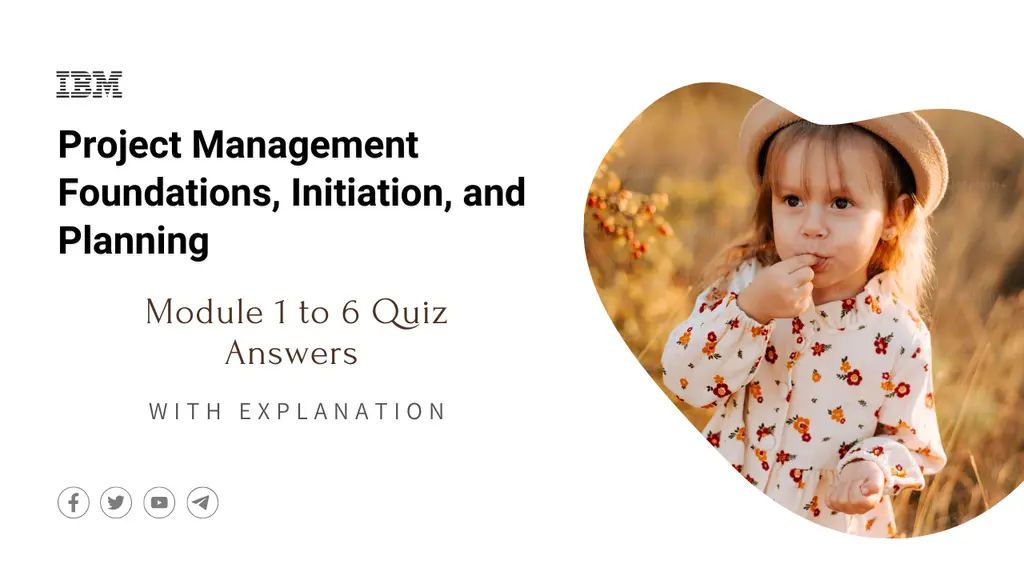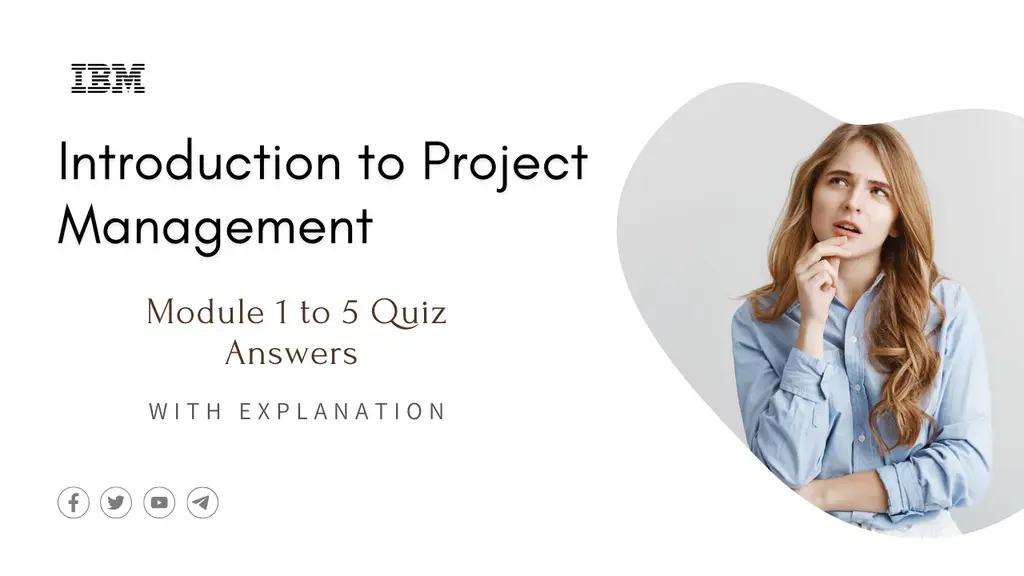Palo Alto Networks Cybersecurity Foundation Quiz Answers Coursera
Hello Friends in this article i am gone to share Palo Alto Networks Cybersecurity Foundation by Palo Alto Networks All Weeks Quiz Answers with you.. | Palo Alto Networks Cybersecurity Foundation Quiz Answers Coursera
Enroll Link: Palo Alto Networks Cybersecurity Foundation
Palo Alto Networks Cybersecurity Foundation Quiz Answers Coursera
Module 2 Quiz Answers
Question 1)
The cloud computing service model in which a provider’s applications run on a cloud infrastructure and the consumer does not manage or control the underlying infrastructure is known as:
- Infrastructure as a Service – IaaS
- Software as a Service – SaaS
- Platform as a Service – PaaS
- Identity as a Service -IDaaS
Question 2)
Which cybersecurity regulation strengthens data protection for European Union – EU – residents and addresses the export of personal data outside the EU?
- Canada Personal Information Protection and Electronic Documents Act – PIPEDA
- General Data Protection Regulation – GDPR
- Payment Card Industry Data Security Standard – PCI DSS
- North American Electric Reliability Corporation – NERC
- Critical Infrastructure Protection – CIP
Question 3)
Select the DevOps process in which developers or IT operations teams can programmatically provision and manage the infrastructure stack – such as virtual machines, networks, and connectivity – for a software application.
- IaaS
- PaaS
- IaC
- SaaS
Question 4)
PCI DSS is mandated and administered by the:
- U.S. Federal Government
- European Union – EU
- United Nations – UN
- PCI Security Standards Council – SSC
Question 5)
Which cybersecurity act defines individual rights with respect to the privacy of their personal information and governs how private sector organizations collect, use, and disclose personal information in the course of business?
- Australian Privacy Principles Act – APPA
- California Consumer Privacy Act – CCPA
- Canada Personal Information Protection and Electronic Documents Act – PIPEDA
- U.S. Cybersecurity Information Sharing Act – CISA.
Question 6)
True or False. It is possible for an organization to be compliant with all applicable security and privacy regulations for its industry, yet still not be secure.
- True
- False
Question 7)
True or False. Most cyberattacks today are perpetrated by internal threat actors, such as malicious employees engaging in corporate espionage.
- True
- False
Module 3 Quiz Answers
Question 1)
Which type of attacker is motivated by political or social causes?
- Cybercriminal
- Hacktivist
- Cyberterrorist
- State-affiliated
Question 2)
Which technique is NOT used to break the command and control – CnC – phase of the Cyber Kill Chain®?
- Blocking outbound traffic to known malicious sites and IP addresses
- DNS sinkholing
- Vulnerability and Patch Management
- DNS poisoning
Question 3)
What is an easy way to make your WiFi security stronger and make it more difficult for hackers to discover your wireless network?
- Change the Access Point – AP – Password
- Change the Service Set Identifier – SSID
- Change the Initialization Vector – IV
- Change the Extensible Authentication Protocol – EAP – security settings.
Question 4)
True or False. Someone with limited hacking and/or programming skills that uses malicious programs (malware:written by others to attack a computer or network is known as a newbie.
- True
- False
Question 5)
True or False. Wired Equivalent Privacy – WEP – is the most effective protocol for securing wireless networks.
- True
- False
Question 6)
Which of the following are examples of an endpoint? Choose 3.
- Desktop
- Point of Sale Terminal – POS
- Smartphone
- Mainframe
Question 7)
True or False. An attacker only needs to successfully execute one step of the Cyber-Attack Lifecycle in order to infiltrate a network, whereas a defender must “be right every time” and break every step of the chain to prevent an attack.
- True
- False
Question 8)
True or False. The Cyber-Attack Lifecycle framework is a five-step process that an attacker can implement in order to attack a network.
- True
- False
Question 9)
Which of the following WLAN standards is the LEAST secure? Pick two.
- Wireless Protected Access – WPA
- Wired Equivalent Privacy – WEP
- Wireless Protected Access 2 – WPA2
- WiFi Protected Setup – WPS
Module 4 Quiz Answers
Question 1)
What type of attack is intended to rapidly cause damage to the victim’s network and system infrastructure, as well as their business and reputation?
- Man in the Middle Attack – MITM
- Distributed Denial of Service – DDoS
- Social Engineering Attack
- Reconnaissance Attack
Question 2)
Malicious software or code that typically damages, takes control of, or collects information from an infected endpoint is known as:
- Exploit
- Malware
- Vulnerability
- Anti-Virus
Question 3)
True or False. Most Botnets are designed to withstand the loss of a command and control – CnC – server, meaning that the entire Botnet infrastructure must be disabled almost simultaneously.
- True
- False
Question 4)
What type of malware allows an attacker to bypass authentication to gain access to a compromised system?
- Logic Bomb
- BootKit
- Rootkit
- Backdoor
Question 5)
What type of malware is triggered by a specific condition, such as a specific date or a particular user account being disabled?
- Logic Bomb
- TROJAN HORSE
- Rootkit
- Backdoor
Question 6)
What type of malware typically targets a computer network by replicating itself in order to spread rapidly? Select more than one.
- Logic Bomb
- Virus
- Worm
- Backdoor
Question 7)
Which type of Wildfire analysis method supports a custom-built, evasion-resistant virtual environment in which previously unknown submissions are executed within a virtualized test environment to determine real world effects and behavior.
- Static
- Dynamic
- Machine
- Bare Metal
Question 8)
Which Wildfire verdict indicates no security risk but might display obtrusive behavior – for example, adware, spyware, and browser helper objects?
- Benign
- Grayware
- Malware
- Phishing
Question 9)
True or False. A vulnerability is a small piece of software code, part of a malformed data file, or a sequence – string – of commands created by an attacker to cause unintended or unanticipated behavior in a system or software.
- True
- False
Question 10)
Which of the following are important characteristics and capabilities of advanced malware? Select all that apply.
- A: Hiding techniques such as obfuscation
- B: Hiding techniques such as polymorphism and metamorphism
- C: Multi-functionality
- D: Distributed, fault-tolerant architecture
Module 5 Quiz Answers
Question 1)
A Zero Trust network security model is based on which of the following security principles?
- Due Diligence
- Least privilege
- Non-repudiation
- Negative Control
Question 2)
Which is not a Zero Trust design principle?
- Ensure that all resources are accessed securely, regardless of location
- Adopt a least privilege strategy and strictly enforce access control
- Allow internal users to access network services through remote access
- Inspect and log all traffic
Question 3)
Which of the following is not a benefit of implementing a Zero-Trust network?
- Clearly improved effectiveness in mitigating data loss with visibility and safe enablement of applications.
- Greater efficiency for achieving and maintaining compliance with security and privacy mandates.
- Improved ability to securely enable transformative IT initiatives.
- Higher total cost of ownership – TCO – with a consolidated and fully integrated security operating platform.
Question 4)
Which capability of a Zero-Trust segmentation platform uses a combination of anti-malware, intrusion prevention, and cyberthreat prevention technologies to provide comprehensive protection against both known and unknown threats, including threats on mobile devices?
- Inspection of all traffic
- Secure access
- Least privilege access control
- Cyberthreat protection
Question 5)
True of False. The principle of least privilege in network security requires that only the permission or access rights necessary to perform an authorized task is denied.
- True
- False
Question 6)
True of False. The primary problem with a perimeter-based network security strategy in which countermeasures are deployed at a handful of well-defined ingress and egress points to the network is that it relies on the assumption that everything on the internal network can be trusted.
- True
- False
Question 7)
True or False. An effective security strategy is to deploy Perimeter-Based Network defenses, where countermeasures are defined at a handful of well-defined ingress/egress points to the network. You can then assume that everything on the internal network can be trusted.
- True
- False
Question 8)
True or False. The Security Operating Platform prevents successful attacks and stops attacks in progress while providing consistent protection to secure the enterprise, the cloud, and the future.
- True
- False
Module 6 Quiz Answers
Question 1)
Which Security Operating Platform capability allows organizations to exert positive control based on applications, users, and content, with support for open communication, orchestration, and visibility?
- Provide full visibility
- Reduce the attack surface
- Prevent all known threats, fast
- Detect and prevent new, unknown threats with automation
Question 2)
Which Secure the Cloud technology functions as a multimode cloud access security broker (CASB), offering inline and API-based protection working together to minimize the range of cloud risks that can lead to breaches?
- Prisma SaaS
- Prisma Access
- Prisma SASE
- Prisma Cloud
Question 3)
Which Secure the Enterprise network security management technology enables centralized control, log collection, and policy workflow automation across all your next-generation firewalls (scalable to tens of thousands of firewalls:from a single pane of glass?
- Next Generation Firewall
- Panorama
- VM Series Firewall
- Subscription Services
Question 4)
Which Secure the Future technology is the only security orchestration, automation, and response system that combines security orchestration, incident management, and interactive investigation to serve security teams across the incident lifecycle?
- Cortex XDR
- AutoFocus
- Cortex Data Lake
- Cortex XSOAR
Question 5)
Which Security Operating Platform capability supports a coordinated security platform that accounts for the full scope of an attack, across the various security controls that compose the security posture. This allows organizations to quickly identify and block known threats.
- Prevent all known threats, fast.
- Full Visibility.
- Reduce the attack surface.
- Detect and prevent new, unknown threats with automation.
Question 6
True or False. The Security Operating Platform proactively blocks known threats, which provides baseline defenses against known exploits, malware, malicious URLs, and C2 activity.
- True
- False
Question 7)
True or False. The Security Operating Platform consists of a tightly integrated system of components and services, including a partner ecosystem, that delivers consistent security across the network, endpoints, and cloud.
- True
- False
Question 8)
True or False. The Security Operating Platform prevents successful attacks and stops attacks in progress while providing consistent protection to secure the enterprise, the cloud, and the future.
- True
- False



